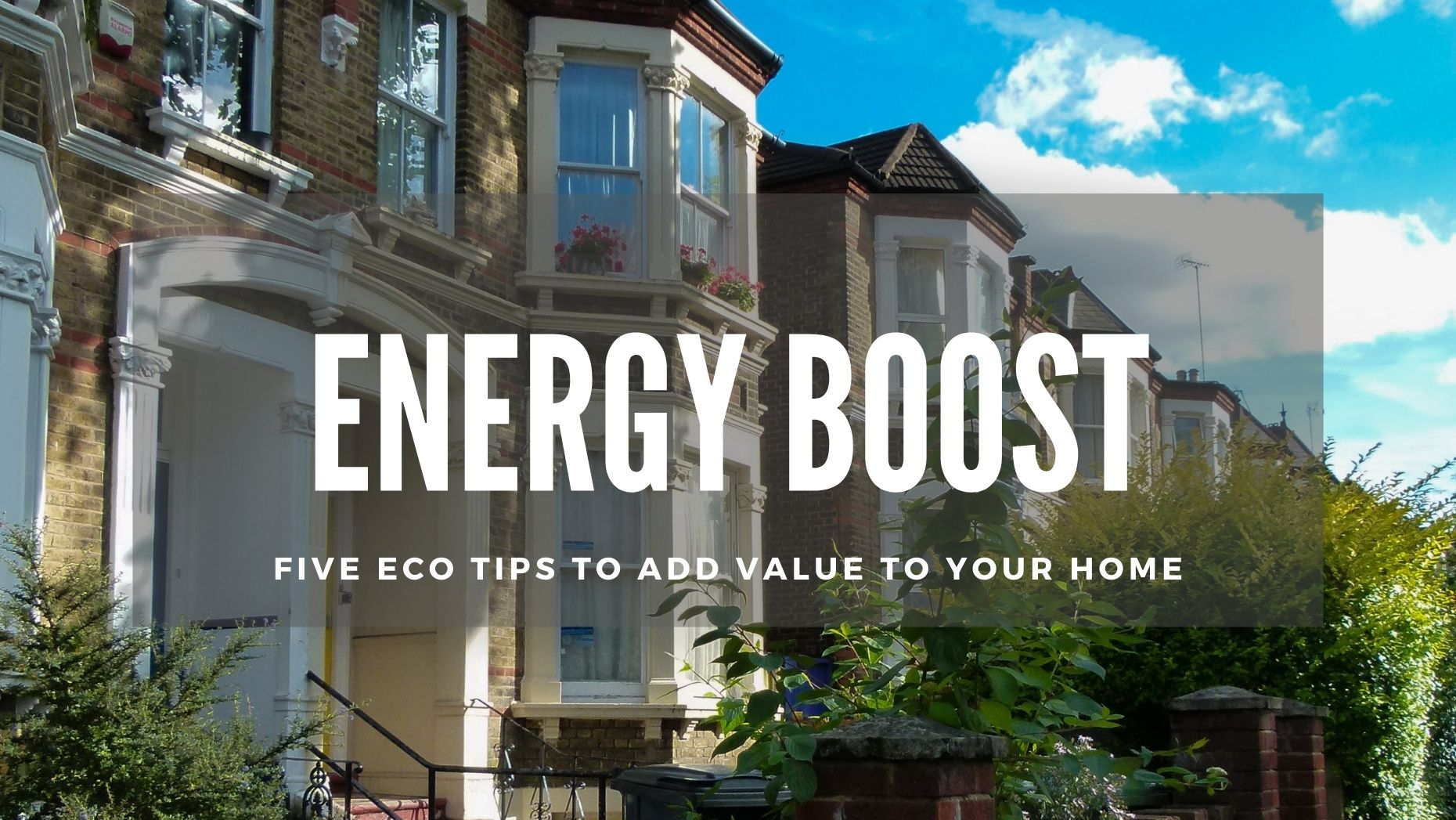
Winter’s on the way and soon we’ll all be cranking up the heat, cooking up stews and cuddling up indoors to keep ourselves warm and content as we snuggle down till spring.
Ever since the introduction of Energy Performance Certificates (EPCs) in the early 2000s, the energy efficiency of homes has taken on greater importance, not least in the minds of homebuyers. Rising fuel costs, climate change and an all-round awareness of the environment have contributed to a shared responsibility as we all look to minimise both our carbon footprint, and our effect on the planet.
While the Government has committed to achieving net-zero carbon emissions by 2050, recent analysis by the BBC’s Shared Data Unit found that two-thirds of homes in the UK fail on energy efficiency targets.
EPCs grade homes from A to G, with A being the most energy efficient, and G the least. The BBC’s audit of the grades given to more than 19.6 million homes found that over 60% fell into Grade D or below.
So this week’s blog looks at the ways you can improve the energy efficiency of your home from two points of view: adding value as an investment in your future sale price, and reducing your day-to-day running costs right now.
WINDOWS
About 10% of heat loss in the average home quite literally goes out the windows, even when they’re closed. Glass isn’t a great performer when it comes to keeping out the cold; it needs a helping hand.
If you don’t plan to replace your windows, then simply fitting sealant strips in the frames of casements or draft excluders between the sashes will have an immediate effect in stopping any drafts .
The next step is replacing older single glazed windows with double glazed units where the panes of glass have argon gas trapped between them to prevent thermal transfer and keep the heat in your home.
Buyers will pay more for improvements that are in-keeping as well as efficient, so be sure to stick with your home’s original style, including the number of panes and their proportions. Double glazed sash and casement windows with timber frames – rather than UPVC ones – retain the authentic look of older properties.
DOORS
The humble letterbox can let in a whole lot more than the post if it’s old and draughty, while older front doors can easily pull in cold air from the outside at the bottom and around the sides, sending drafts through your hallway and up your stairs, making your home more difficult and more expensive to heat.
You don’t necessarily need to replace your front door, but you can certainly make it more airtight by fixing weather-stripping into the frame, and brushed draft excluders at the bottom of the door and over the letterbox.
If you do plan to replace your door, keeping with the original style helps to retain the architectural heritage of the building and will appeal to more buyers. Modern versions of older doors with thermal insulation and triple glazed panels can make a huge difference to the temperature of your hallway.
Your interior doors can also be a source of drafts which are easily fixed by installing draft excluders at the bottom to remove the gap between the underside of the door and the floor. If you plan to replace the doors, keeping as close to the original design as possible will ensure an authentic interior.
INSULATION
If you have a loft, your heat can easily drift up to the top of your house and out through the roof, taking your energy bills with it. When it snows, you can see from the outside which houses don’t have roof installation because they’re first to melt the snow, which is a shame and an irony because a thick layer of snow actually acts as extra insulation.
Insulating your loft is relatively inexpensive and can even be completed as a DIY job at the weekend. You can buy rolls of insulation from places like B&Q that you lay between the joists on the floor of the roof space.
Adding further insulation between the rafters on the underside of the roof will keep even more heat in your home and is particularly important if you plan to convert your loft into further accommodation: plasterboard and plaster are not enough to keep the heat in and you’ll find it hard to keep a loft room warm if you skimp on the insulation.
You can even insulate the walls of your house, whatever its age. Walls account for the largest areas of outside surfaces in most homes and are responsible for up to 35% of heat loss. From spray foam in cavity walls to rigid panels mounted on the inside, there are options for every age of property. Don’t assume that because you have a Victorian property that it doesn’t have cavity walls – a surprising amount do!
HEATING & HOT WATER
A modern central heating system, whether gas or electric, is the most efficient way to heat a home and is an expectation among buyers.
About 60% of yearly energy costs are spent on heating alone, making it the largest of potential costs and savings. Modern A-rated boilers are 90% efficient, compared to the 65% of a G-rating, with various options available depending on the type of home. A new boiler can seem like a fairly hefty upfront cost, but over its lifetime could save you far more than its purchase price.
Thermostats and timers make life easy when it comes to having your home warm when you want it to be, without wasting energy on continually heating the rooms when they’re already warm, or of course when no-one is home. You can even get wi-fi versions that you can turn on with an app on your phone, so you can activate the heating on your way back home. Smart technology like Hive and Nest are an affordable and sophisticated way to give your existing heating system a twenty-first century upgrade.
From a design aesthetic, radiators are now almost works of art and are another way of giving your existing system a swift and beautiful upgrade. Contemporary and heritage models in both vertical and horizontal styles allow you to transform the look of your home, as well as its energy efficiency., with relatively little work.
SOLAR POWER
The costs of solar powered panels have steadily dropped over the years as manufacturers have found new ways to innovate and increase the efficiency of the technology.
The average yearly consumption of electricity for a UK household is around 3,200-4,100kWh, with the average energy bill around £1140. A solar panel system of 4kW (a common size for an average home) has an output of 3,400kWh per year (83-106% of the home’s electricity demand) and will cost you around £5,000, so it needn’t take long before the savings start to outweigh the cost.
There are factors to consider, particularly the direction your home faces. If you have a north-facing roof then the panels will have significantly reduced capabilities, but a south-facing roof will get maximum benefit.
And if you don’t use all the energy you produce, the Smart Export Guarantee that was introduced in 2019 means you can receive payments for the surplus energy you export back to the grid.
Even if solar-power isn’t an option for you right now, it’s worth keeping an eye on the technology as it gets better and cheaper every year. Having minimal, zero or even minus energy bills will give your home a real advantage among cost- and energy-conscious buyers.
CAN THESE IMPROVEMENTS REALLY ADD VALUE?
Buyers often ask to see energy bills which, when taken with Energy Performance Certificates, form part of their decision when choosing a property as their next home.
It’s no longer just about the mortgage or service charge, which means people will pay less for a property that requires expenditure to reflect modern lifestyles, standards and consciousness. If your home has poor insulation, grotty windows or an outdated heating system, these will be noted on your Energy Performance Certificate and flagged as areas of higher running costs for the next owner.
Showing that you’ve invested in your property sends good signals to buyers, so even if you’re not considering a move just yet, improving the energy efficiency of your home is a sound investment for the future. And if your energy consumption drops, so will your utility bills, giving you immediate and lasting financial benefits for as long as you are there.
If you’re still unsure whether it’s worth your while to invest in energy efficiency improvements for your property, please feel free to get in touch You can call us on or emails at any of our offices: https://www.fifeproperties.co.uk/contact/ – we’re here to help you make the right decision.


